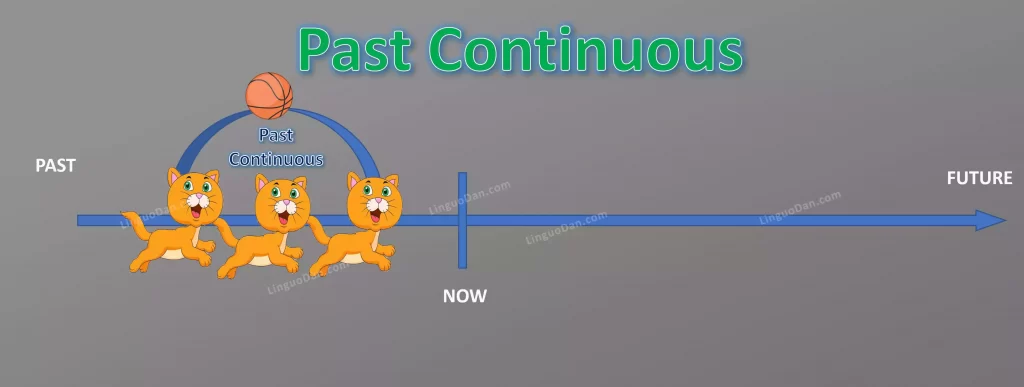Past Continuous

Past Continuous (Past Progressive) – the past continuous tense in English, indicating an event or process that continued at a certain time in the past. Moreover, this moment in the past must be noted. The Past Continuous is formed using the auxiliary verb was or were and the simple present participle form (with the ending -ing). Was and were are the past tense forms of the verb to be.
| Past Continuous | ||
| Signal words | Use | Form |
| While
When at that moment |
an action happened in the middle of another action
someone was doing sth. at a certain time (in the past) |
was/were + infinitive + ing |
The general scheme of using the Past Continuous on the example of the verb – to play
| Positive | Negative | Question |
| I/He/She/It was playing | I/He/She/It was not playing | Was I/He/She/It playing? |
| You/We/They were playing | You/We/They were not playing | You/We/They You/We/They playing? |
To form the Past Continuous, we use the was / were form of the verb “to be” plus the infinitive of the verb ending in -ing.
It is important to know:
- verbs ending in е, the last letter is dropped and added -ing (hate – hating)
- verbs ending in ie, the ending is replaced by -y + -ing (lie – lying).
- monosyllabic verbs ending in 1 vowel + 1 consonant double the final consonant (upset – upsetting).
Examples:
- While I was cooking, Dan was reading a book
- I was cooking when the telephone rang
- At 10:00 last night, we were watching TV